Monday, December 21, 2009
[N900 REVIEW] Part 1 : Intro and Design
Flagships have a tough time in the phone world. Designed to include every function under the sun and to appeal to the most knowledgeable and tech-hungry users, they inevitably come up short !
But N900 is Nokia's flagship or not? That's the question (or not!) !, it is a tech-head Internet tablet with phone, some kind of a work in progress !
IMHO, the N86 is the 3rd Edition S60 flagship, the N97 is for 5th Edition, and the N900 is the Maemo flagship at the moment, and Nokia's flagship OS is Maemo (at least, that what was planed), so why wouldn't it be Nokia's flagship? It's certainly the Nokia's flagship in terms of raw power.
The N900 is the most compact and coolest POSIX-compliant computer in the market, the phone application is just another application on the device, not necessarily the most important.
Huh, you say? POSIX (”Portable Operating System Interface [for Unix]“) is a geek term used to define certain standard requirements on an operating system, which include “the application programming interface (API), along with shell and utilities interface”. What this means is that the N900 can be used as a normal UNIX computer and run normal UNIX programs. This is something fascinating for UNIX and Linux computer professionals and aficionados, because it opens a lot of possibilities for them, especially in development (don't be fooled by the Linux underpinnings-- the iPhone, Palm's webOS and Android all use some form of Unix or Linux inside).
As you may have noticed, what I think makes the N900 a real standout are features that are important for developers! And developers are exactly the kind of user the N900 is mostly trying to reach. Nokia has been on record stating that the N900 is not what they consider a consumer ready device. They consider it the last step before the true consumer ready Maemo device arrives. That is why it is so important for them to appeal to developers. The N900 will provide the fertile ground where developers will be able to create the applications that will in the future make Maemo the best option for the regular user.
Does this mean that if you are not a developer you should not buy the N900? Not necessarily. As long as you understand the current limitations of the device, like the ones I mentioned above, are savvy enough to deal with some of the growing pains that are likely to be experienced as the OS and its applications mature and stabilize, and as long as you understand and value the advantages that the N900 offers, then you should be really happy with the N900.
Unboxing and hardware Walk-around :
I have spent several weeks with the device and will give you some of my first thoughts to go along with my image gallery below, and i'm still discovering this beast !
The box is just about exactly the same as the slick Nokia N97 packaging with the small black design and embedded/stamped impression of the device and keyboard on the front top flap.
I still have the feeling that there is a bit too much empty The body's almost entirely plastic, but solid enough, The build quality and slider mechanism are solid, i like the matte finish to the sides and back, but the black glossy display is quite the fingerprint magnet, it looks very nice a good all-purpose choice and one which will work adequately even in sunlight, when out and about taking photos and even though it is resistive it performs almost like a capacitive display with fluid motions too, the (resistive) touchscreen is utter fingerprint magnets - this isn't a device to pull out after eating fish and chips!
N900 runs Maemo 5 and is completely different from any Nokia telephone that you may have owned. The first thing that you will note is that there is no end/red key, so unlike other Nokia devices you will not have a single key to press in order to get to the home screen
The notification light found on the front of the N900 changes colors to indicate different states, for example :
- Blue is for application triggered notifications (received text, IM, or email)
- Orange is for battery charging
- Green is for battery full
Turning it off should save you some battery life too
From the top to the bottom, we find :
- The ambient light sensor wich controls the keyboard's backlit only i guess...
- A front-facing VGA camera lives above the display, but the phone currently doesn't support 3G video calling and there are no VoIP apps that currently support video calling (we'd love to see video calling via Skype!).
- Proximity sensor as on the first s60 device, the 7650, or some of recent Symbian touch devices like the 5800XM, N97, Omnia HD etc. So when you hold the N900 up to your head the display turns off and then when you pull it away the display turns back on, also when device is on your pocket, to prevent accidental manipulations and to save some battery life during a call ;)
On the top of the device side (for natural placement when held like a camera, e.g landscape orientation) from the left to the right we find :
- IR port (most likely use would be home theater remote control applications developed by 3rd parties)
- The camera shutter button
- The power button (that turns off the phone when pressed and held and with a short press brings up a set of menus to switch to offline mode, lock the screen and keys, switch to silent mode and end/kill the currently running application, bring up the phone dialer, turn Off/On Wifi and Bluetooth etc)
On the right side (from the top to the bottom)
- One of the stereo speakers.
- Hardware screen/key lock that is located at a very odd position and isn’t very intuitive as such (Fortunately, Nokia has also included another option. You can quickly doublepress the power button on the N900 to lock the touchscreen and press it once to bring up an option to unlock it by dragging your finger across the screen), - Also, we find a 3.5mm stereo headset jack (And Tv Out)
- Microphone for calls, dictaphone and video sound's recording i guess.
- Finally we found a "slot" for stylus (for precise operations like when manipulate Google wave, Google Docs, Calendar, Google docs, spreadsheet or simply for drawing for example)
The other stereo speakers and the micro USB port (which doubles as the charger connection) are located on the left side :
The QWERTY keyboard isn't large as the E90's one but is enough to type pretty accurately, it's a pain for digits typing because it requires additional press on the blue "Fn" key, fortunately, double-pressing it "locks" its function so if you need to type more digits at once it'll free you from having to press "Fn" multiple times
Each key gives pretty good feedback like the E90 it seems to have a better feel than the N97 thanks to their convex design. You can also turn on the on-screen keyboard if you like (no handwriting recognition or a small QWERTY keyboard, only a full QWERTY one).
What i like the most while typing, is no doubt the predictive (T9) text input wich offer the possibility to use two languages at once, and it additionally accelerates typing !
Note that the backlight of the keybord is very well and equally distributed, nothing to complain about :
The keyboard on the N900 plays host to a large number of shortcuts, some shortcuts found in the User Guide:
General
Ctrl + Backspace: This brings up the visual task switcher and is especially convenient when you are web browsing in the full screen mode and have multiple windows open.
Ctrl + C : Copy text
Ctrl + V : Paste text
Ctrl + X : Cut text
Ctrl + A : Select all
Ctrl + O : Open (if available)
Ctrl + N : Create a new item (if available)
Ctrl + S : Save (if available)
Ctrl + Z : Undo (if available)
Ctrl + Y : Redo (if available)
Ctrl + F : Open search bar (if available)
Ctrl + Right arrow : Move the insertion point to the end of the word
Ctrl + Left arrow : Move the insertion point to the beginning of the word
Also, to select text in the first place, you can use the shift key (far left) and the directional arrows on the keyboard to select text. Or you can use the stylus and double tap for a word or triple tap for all words in a document to select.
In the Web browser.
Ctrl + N: Open a new window
Ctrl + R: Reload the current page
Ctrl + B: Open a bookmark
Ctrl + D: Add a bookmark
In the Email client :
Ctrl + Enter : Send a message
Ctrl + R : Reply to a message
RSS Reader
Ctrl + R: Refresh the feed
Screenshots
Ctrl + Shift + P : Capture a screenshot.
The camera lens lives on the back and is protected by a sliding door. Open the door and the camera application automatically launches. As with the Nokia N96, a pop-out ring surrounding the lens doubles as a desk stand.
Another point of criticism is the slot for the microSD card slot (hot-swappable). This can only be achieved by removing the back cover. Granted, one does not change the memory card every day, but if so it is annoying.
You will find the following in the retail box:
- Nokia N900
- Nokia Battery (BL-5J)
- Nokia High Efficiency Charger (AC-10)
- Nokia Stereo Headset (WH-205)
- Video out cable (CA-75U)
- Nokia charger adaptor (CA-146C)
- Cleaning cloth
Highlights specifications :
OMAP3430 - 600 MHz ARM Cortex A8 (application processor) + PowerVR SGX 530 GPU (graphics acceleration processor) + 430MHz C64x+ DSP + ISP (Digital/Image Signal Processor taking care of telephony, data transmission, image processing)
The Nokia N900 may have some of the best specs currently available for a mobile phone Internally, it shows great promise, with 256MB of RAM and an OMAP3 graphics acceleration chip, just as with the Samsung i8910 HD, Sony Ericsson Satio and Apple iPhone, also, the N900 is :
- Quad-band GSM (850/900/1800/1900 MHz)
- WCDMA 900/1700/2100 3.5G support
- 256 MB RAM (SDRAM), 768 MB of NAND-based virtual memory (swap)
- Over 2 GB of space for installable softwares
- TI OMAP 3430 ARM Cortex-A8 600 MHz processor and 3D accelerator
- Maemo 5 operating system
- Integrated 32GB internal storage
- MicroSD card slot
- 3.5 inch (800×480 pixels) display with support for up to 16.7 million colors
- BP-5J 1320 mAh Li-Ion battery
- Bluetooth 2.0 with EDR
- Integrated GPS receiver
- 3.5mm headset jack
- MicroUSB port for syncing and charging
- 5 megapixel camera with Carl Zeiss optics f/2.8 and focal length of 5.2 mm
- Integrated FM transmitter
- Accelerometer
That's said, how about N900's size? Well, it's "big" and "fat" voilà !
In summary, the phone's build quality is on par with that of the Nokia E75, The top half of the phone (the part that slides out) is surrounded by a strip of black metal which not only looks great but feels great in hand too. The border that surrounds the display is made up of a glossy black plastic that sits behind one seamless glass display. The bottom half is made of a matte plastic that does an excellent job of avoiding fingerprints and general grubbiness. The same can’t be said for the front but then this is a touchscreen phone so we come to expect this !
What's hot :
- Lens shutter manage to keep the lens clean
- The micro USB port (which doubles as the charger connection)
- Good level of feedback and a quality feel.
What's Not :
-The microSD slot is hidden under the rear pane
- Resistive screen (i still love manipulate my Omnia HD)
- Volume (mainly, thickness side)
- Hardware screen/key lock that is located at a very odd position
- Lack of "full" qwerty keybord
- Battery cover removing system




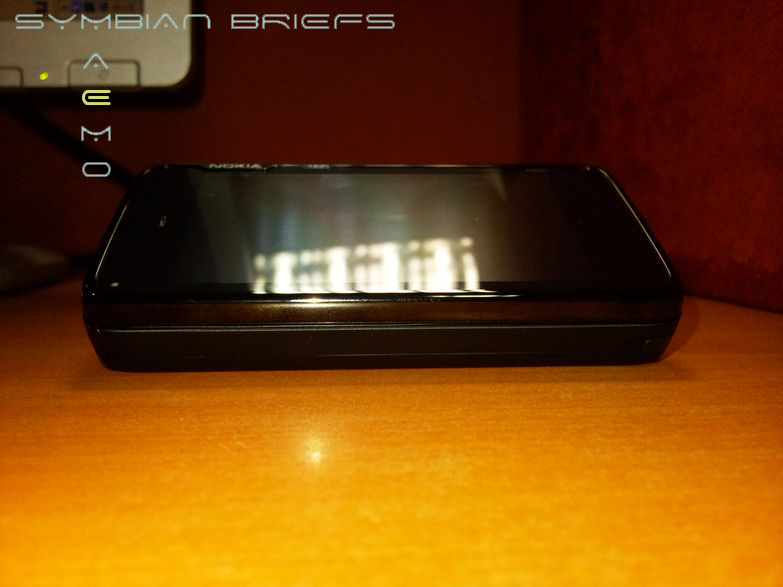
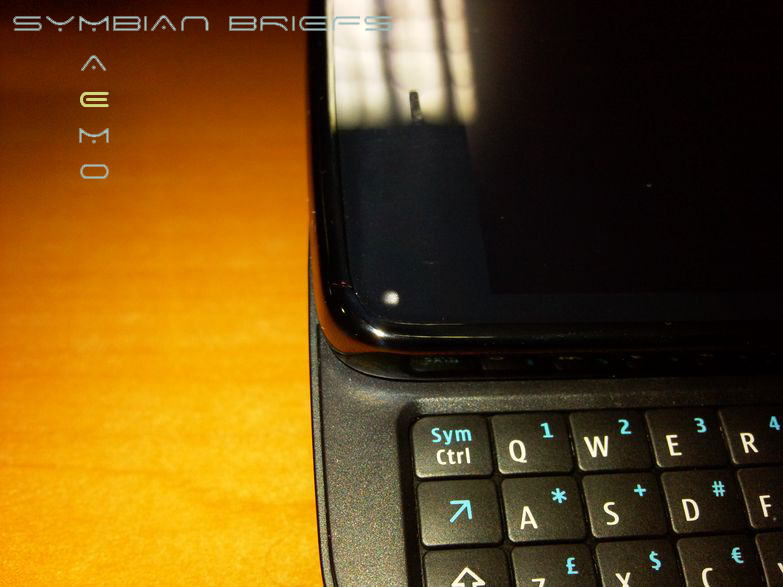
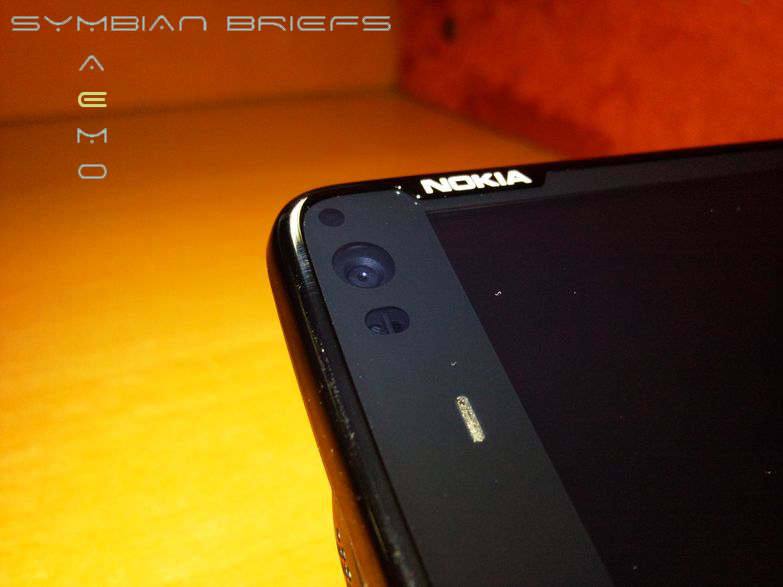
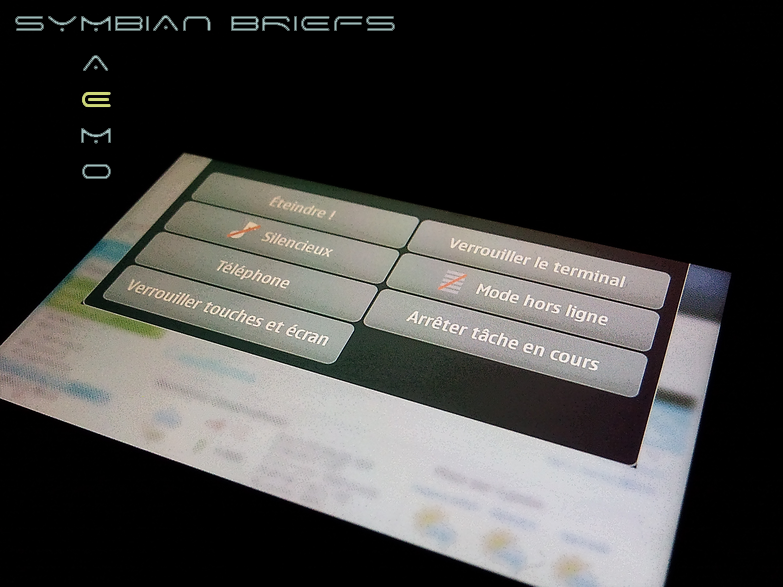

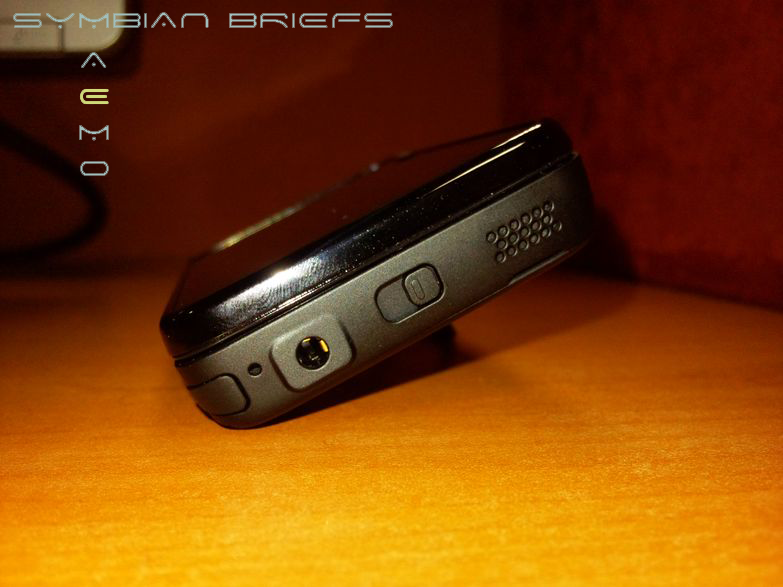
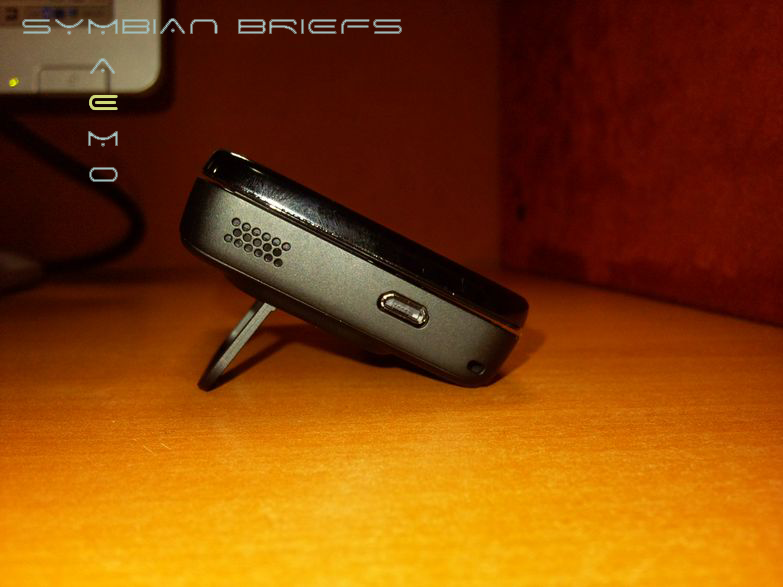
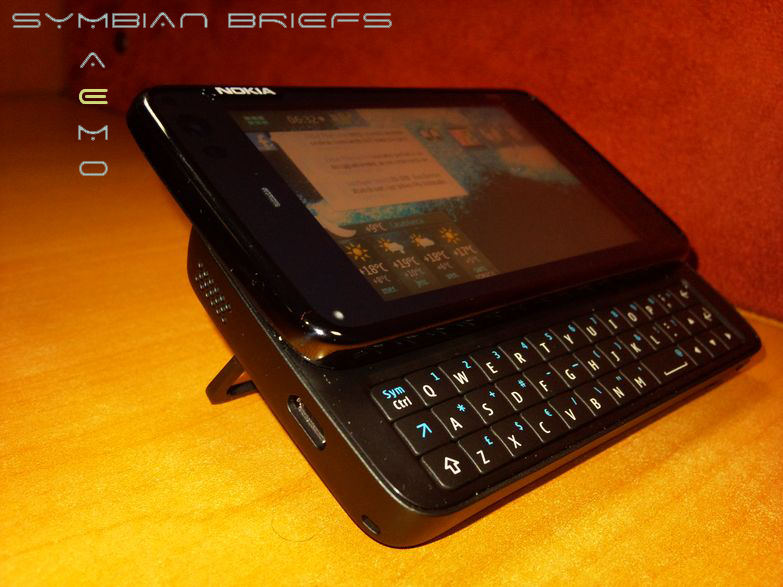
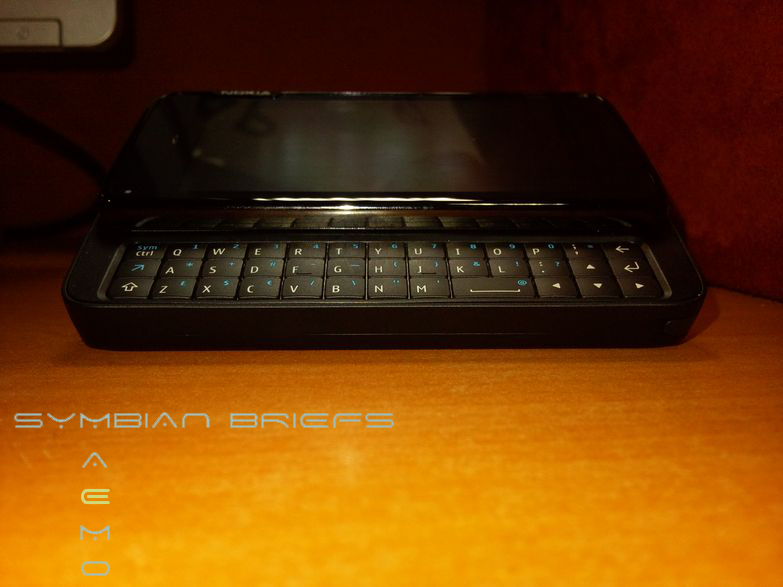
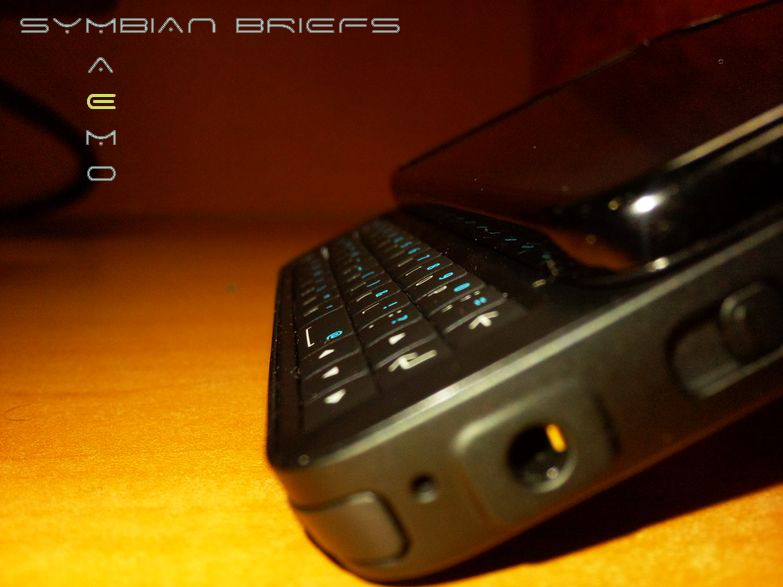


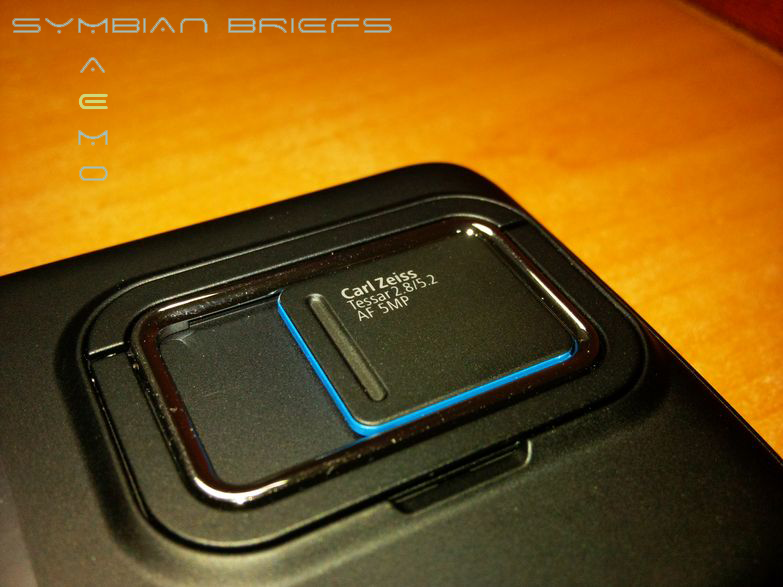
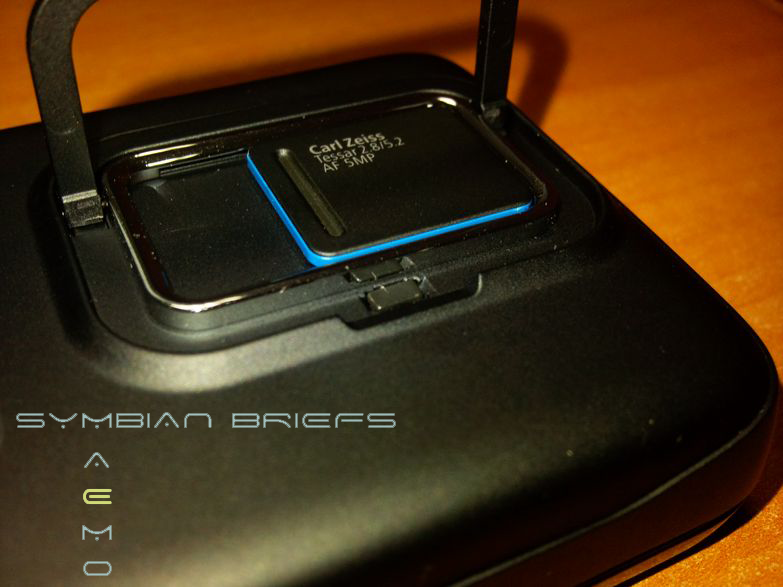
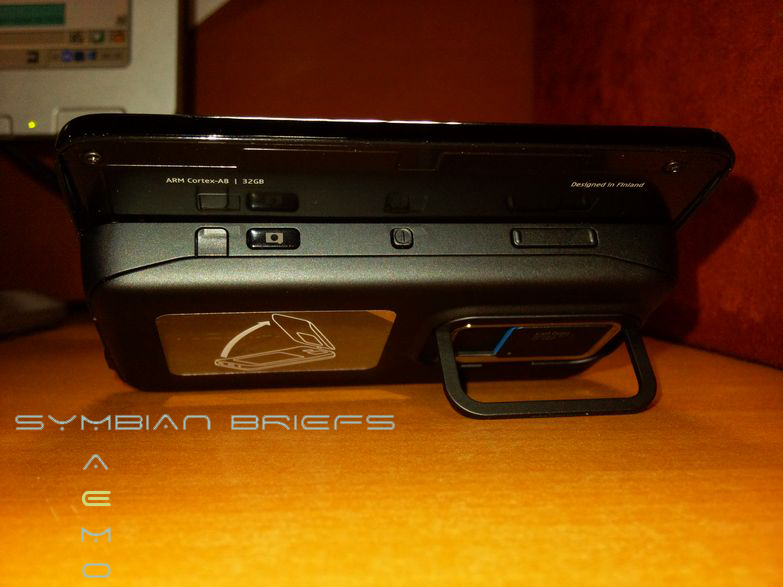



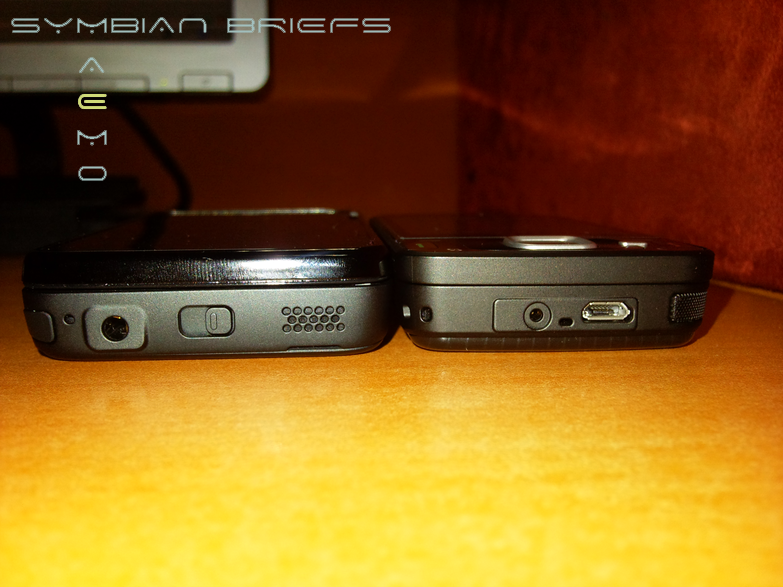
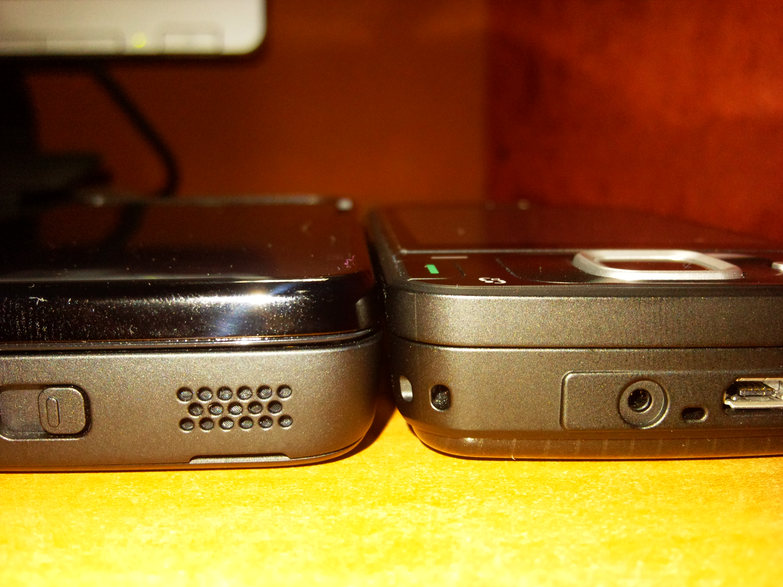




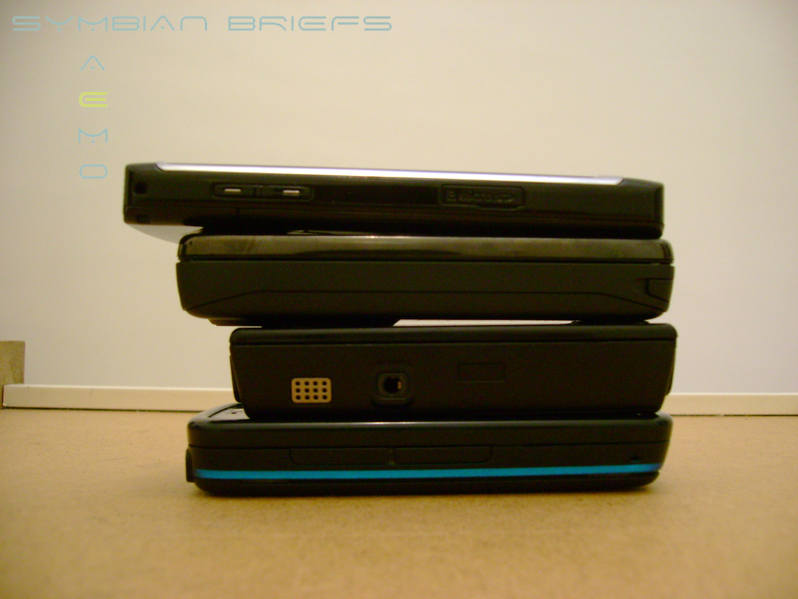





No Response to "[N900 REVIEW] Part 1 : Intro and Design"
Post a Comment